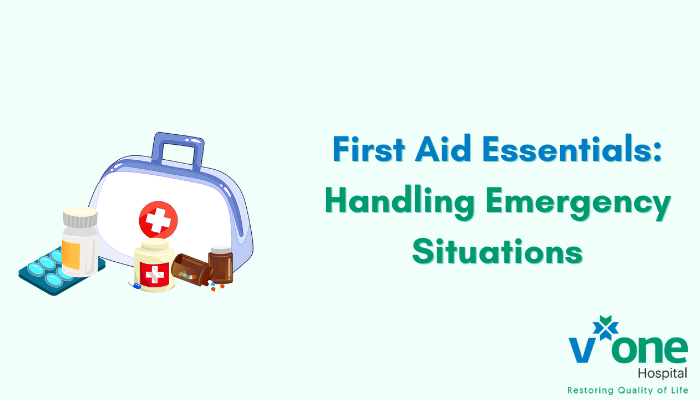How to Handle Emergency Situations: First Aid Essentials
Emergencies can catch us off guard, and in those critical moments, knowing the right first aid techniques can make all the difference. Let’s delve into various emergencies, understand the nature of injuries, explore the step-by-step treatments, and address some frequently asked questions related to first aid essentials.
1. Assess the Scene and Ensure Safety First
Imagine witnessing a car accident. The initial step is to assess the scene for potential dangers – oncoming traffic, fire, or unstable structures. Once you’ve secured the area, check the person’s responsiveness. If unconscious, proceed to the ABCs of first aid.
2. Unconsciousness: ABCs – Airway, Breathing, Circulation
Unconsciousness demands immediate action. Check the person’s airway for obstructions, tilt their head back slightly, and listen for breathing. If absent, begin CPR, focusing on chest compressions and rescue breaths. Continue until professional help arrives.
3. Cuts and Scrapes: Clean and Cover
Picture a scenario where someone sustains a deep cut. Start by cleaning the wound with mild soap and water. Gently pat it dry and apply an antibiotic ointment to prevent infection. Cover the wound with a sterile bandage, changing it regularly for optimal healing.
How do I know if a cut requires professional medical attention?
A: Seek medical help for deep cuts, wounds with embedded objects, or those caused by rusty objects to prevent complications.
4. Burns: Cool and Cover
Consider someone accidentally touching a hot surface. For burns, immediately cool the affected area under running cold water for at least 10 minutes. Avoid ice, as it may exacerbate the injury. Once cooled, cover the burn with a non-stick bandage.
When should I seek medical attention for a burn?
A: Consult a healthcare professional for severe burns, electrical or chemical burns, or burns on the face, hands, feet, genitals, or major joints.
5. Sprains and Strains: R.I.C.E. Method
Visualize someone twisting an ankle during physical activity. Rest the injured area, apply ice to reduce swelling, use a compression bandage to provide support, and elevate the limb to minimize pain and swelling. This R.I.C.E. method aids in a quicker recovery.
Can I use heat instead of ice for a sprain?
A: No, use ice for the first 48 hours to reduce swelling. After that, you can use heat to soothe the area.
6. Choking: Perform the Heimlich Maneuver
Imagine someone choking on food. Stand behind them, wrap your arms around their waist, make a fist above the navel, and perform quick, upward thrusts until the object is expelled. If the person loses consciousness, initiate CPR immediately.
Can I perform the Heimlich Maneuver on myself?
A: It’s challenging, but you can try using a chair or countertop to apply abdominal thrusts to yourself. Seek immediate help if unsuccessful.
7. Seizures: Keep Calm and Protect
In the event of a seizure, maintaining a calm demeanor is crucial. Clear the surrounding area to prevent injury, gently place the person on their side to aid breathing, and cushion their head. Refrain from restraining their movements and seek medical help if the seizure persists.
Should I put something in the person’s mouth during a seizure?
A: No, never put anything in their mouth. This can lead to injury. Focus on protecting them from surrounding hazards.
8. Heart Attack: Recognize Symptoms and Call Ambulance
Imagine someone experiencing chest pain and shortness of breath. Recognize the symptoms of a heart attack, immediately call the nearest hospital, help the person sit down, and reassure them. If prescribed, assist them in taking their medication while awaiting professional help.
Should I give aspirin to someone having a heart attack?
A: If advised by a healthcare professional, you can provide aspirin to the person. However, don’t give it if they’re allergic or if it’s contraindicated.
9. Heat-Related Illness: Cool Down Gradually
Consider a scenario where someone exhibits signs of heat exhaustion or heatstroke. Move them to a cooler environment, loosen clothing, and cool them down gradually with a damp cloth or cool bath. Hydration is also crucial in these situations.
Can I give the person suffering from heat-related illness cold water to drink?
A: Small sips of cool water are fine. Avoid giving them large amounts of cold water, as it may cause stomach cramps.
10. Poisoning: Call Poison Control Immediately
In the case of poisoning, quick action is paramount. Call Poison Control immediately, providing detailed information about the ingested substance. Refrain from inducing vomiting unless instructed. Follow Poison Control’s guidance for further steps.
What information should I provide to Poison Control?
A: Be prepared to share the person’s age, weight, the substance ingested, and any symptoms they’re experiencing.
Conclusion
In emergency situations, knowing what to do can be a lifesaver. By understanding these first aid essentials and addressing common questions, you become a crucial link in the chain of response. Consider taking a comprehensive first aid course to enhance your knowledge and response capabilities. Your preparedness may indeed save a life. Stay informed, stay safe!

